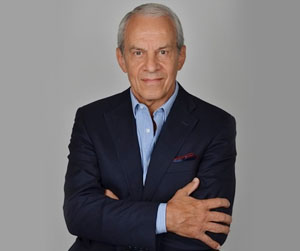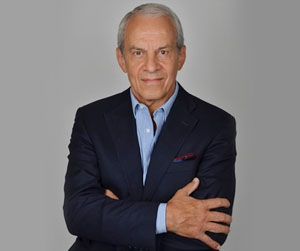Nipple reduction
Nipple reduction is a relatively uncommon operation among Europeans, but it is more common among Asians.
This operation is useful when the nipple is too large in relation to the size of the breast. This nipple enlargement is often accompanied by sagging as the nipple hangs over the areola instead of being perpendicular to it.
This anomaly is usually due to breastfeeding one or more babies over a lengthy period of time and it can be unilateral or bilateral as well as more pronounced on one side compared to the other.
Nipple hypertrophy exists in two dimensions: a nipple can be either simply too long or too long and too wide. A reduction will then focus on one or both dimensions of this enlarged nipple.
Requests for this procedure usually stem from the fact that the nipple is drooping, causing aesthetic issues.
Nipple reduction is a very simple operation, performed under local anaesthetic and leaving only a very discreet scar at the base of the nipple.

Reduction of the nipple length and an increase in volume using axillary prosthesis
Uses
People with nipple hypertrophy are not always aware of the opportunities to correct this because it is not a very widespread or well-known operation in the public domain. It is only common among patients who come for another type of breast operation, such as a breast augmentation, breast reductionor breast lift and ask for this problem to be corrected at the same time.
Consultation
During the first consultation, it is essential that you express freely what bothers you and what you expect to improve. Do not be afraid to expose all your questions, fears and expectations. Everyone is different in morphology and psychology, expectations are not the same, there is no standard.
After you have explained your motivations, I will examine you and offer one or more solutions, taking into account your expectations, your anatomy, respecting your identity and the harmony of your physique.
During the first consultation, I will evaluate the technique I will use.
In order for you to visualize the desired result, I will show you photos of surgical results from cases similar to yours for you to understand the objective of the intervention.
It is essential that you and I have a good understanding when deciding to operate and to determine the technique to use among from those I can offer.
I will then give you all the information on the techniques proposed along with the information sheets from the Société Française de Chirurgie Plastique Reconstructrice et Esthétique (French Society of Plastic, Reconstructive and Cosmetic Surgery) as well as a detailed estimate of the costs for the options chosen. You will then be able to move your project forward and get ready for a second consultation when you will be able to ask any additional questions to help you make a decision and prepare for the operation.
Before the procedure
Pre-operative examinations should be performed:
-
Breast ultrasound and/or mammography to check breast health. These will allow any anomalies to be picked up and these may be treated during the operation or may possibly lead to additional pre-operative examinations.
-
A blood test, if necessary, depending on the type of anaesthesia (local or general).
If you have a general anaesthetic, you will need a consultation with the anaesthetist in the weeks preceding the operation and at least 48 hours before.
Recommendations
No medications containing aspirin or anti-inflammatories can be taken within 10 days of the procedure.
For general anaesthetic, you will have to fast strictly for 6 hours before the operation (do not eat anything, chew gum, eat sweets or smoke).
Smoking can cause scarring problems.
The procedure
Hospitalisation and duration of the procedure:
In most cases, you can leave the same day after a few hours of monitoring following the operation.
The procedure lasts about 30 minutes.
Type of anaesthetic
Local, deep local (neuroleptanalgesia) or general, depending on your preferences.
Technique
Before going to the operating theatre, in your room, I will draw the marks for the incisions on your skin to guide the operation. I will also go over with you the exact objectives that we agreed during the consultations. You can then always make recommendations or ask any questions.
Reducing inverted nipples can be carried out in the following ways:
1. A reduction in nipple length:
The nipple is not completely severed and a collar of skin corresponding to the height of the desired reduction is removed from around the base of the nipple. The remaining top of the nipple is stitched to the areola with absorbable sutures that do not need to be removed.
2. Reduction in nipple width:
Width reduction is carried out by resectioning two diametrically opposed nipple quarters. Stitching the remaining edges creates the new nipple diameter. The stitches are absorbable and do not require shrinkage.
At the end of the operation, a dressing is applied to the scar.
After the operation
During the night and the days following the operation, you may have a sensation of painful nipple tension. The pain is moderate and may require analgesics. These post-operative pains will diminish and disappear within a few days of the operation.
The dressing will be completely removed during the first post-operative consultation about a week after the operation and replaced by a waterproof adhesive dressing. This will allow you to shower and you should change it every 8 days.
As the stitches used are absorbable, they do not need to be removed.
Swelling (oedema) and bruising of the areola are usually very moderate and it takes about ten days for this to disappear almost completely.
You will need to take about 1 day off work in the majority of the cases.
Care
You will wear a waterproof dressing, allowing you to take showers, and this must be changed every 8 days over a 1-month period.
You will need to attend a follow-up consultation about a week after the procedure, then after 15 days, 1 month, 3 months, 6 months, and 1 year.
Recommendations
-
You may resume sporting activities 1 month after the operation and limit yourself to painless movements.
-
The recommended rest position is lying on your back, slightly raised if possible. You can also lie on your side but not on your stomach.
-
Exposure to the sun: no direct exposure before 1 month then exposure is allowed using a sun protection cream with a maximum sun protection factor. No exposure as long as there are bruises or the scar is pink.
-
Pregnancy and breastfeeding: it is advised to wait 6 months before considering a pregnancy so that the nipple has reached its final shape and the mammary ducts have had time to heal.
The result
The result is immediately visible despite any swelling and will improve in the weeks following the operation.
In the long term, the result is stabilised in a sustainable way.
In addition to an aesthetic improvement, this operation has a beneficial impact on the patient’s personal well-being and development as they are relieved of this complex
Risks and complications
Price range
The cost of the operation will depend on the procedure to be carried out, the duration of the operation, the type of anaesthetic and any hospital charges.
The procedure does not entitle the patient to social security reimbursement.
A detailed estimate is given to you during the first consultation according to the options chosen. You then have a minimum legal period of 15 days to reflect and take your project forward.
The first consultation costs €50. The follow-on consultations, before and after the operation, are free.
The photographs on this page illustrate and complete the information given on the operations. They are merely for information purposes so you can see the goals, results and scars from the operation.
The likelihood of scarring and each patient’s individual anatomy are different. For this reason, therefore, the photographs on this site do not commit Dr. Benelli to providing all patients with a similar result.
The information given on a site is not sufficient in itself and a medical consultation is essential to get the right information for each individual case. For this, you will need to consult a surgeon qualified in Plastic Reconstructive and Aesthetic Surgery.



